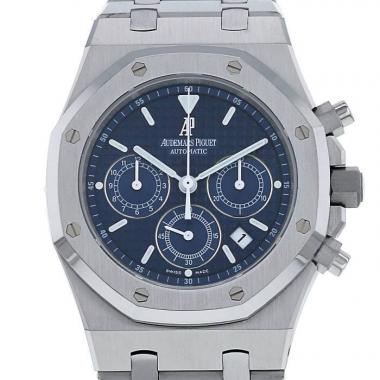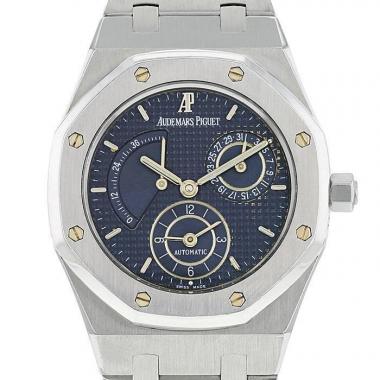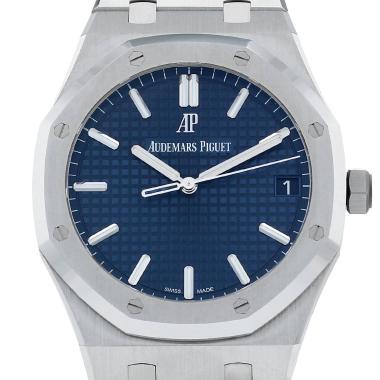The history of Audemars Piguet watches
There are encounters that are so fertile and profound that they go down in history, as did the meeting between two young men, Jule
Audemars Piguet watches
There are encounters that are so fertile and profound that they go down in history, as did the meeting between two young men, Jules-Louis Audemars and Edward-Auguste Piguet. They had a lot in common apart from their shared geographical origins: their ancestors had been watch makers for many years and they too had devoted themselves to this arduous profession. They were both talented and wanted to make the highest quality movements and complete watches under their own names. Both of them underwent full training as watch ‘repasseurs’. In 1875, just after his return to Le Brassus, Jules Audemars began making complex movements in his parents’ home. Edward Piguet, whom he had known since school, a sport club and a choir, sometimes came to assist him. At their regular meetings, they decided to work together professionally. They founded their own company in Le Brassus on the 17th of December 1881 and named it Audemars, Piguet & Cie. They presented their first complex pocket watches in 1882. These included watches with a perpetual date and minute repeater plus chronographs.
In 1891, Audemars Piguet (AP) became the talk of the town with the smallest minute repeater movement in the world, with a diameter of barely 18 mm. At the turn of the century, Union, the makers of precision pocket watches founded in 1893 in Glashütte, became one of its biggest customers. Between 1895 and 1912, AP delivered a total of 35, mostly complex, pocket watches to the German capital of watch making. In 1920, AP delivered one of his most sophisticated pocket watches with a total of 15 complications, including a tourbillon, a large and small chime, an equation of time, a perpetual date, sidereal time and an absolutely exceptional blue enamel dial with 315 engraved stars cut to reproduce a precise representation of the current celestial vault above London. AP concentrated on wristwatches from 1893, all of which were unique specimens. One of these was undoubtedly the first minute repeater wristwatch in the world which was made to order for Louis Brandt. There were endless discussions on the question of whether the winder crown should be on the left or right of the case. At the time, it was far from common for right-handed people to wear their watches on their left wrists.
From the early part of the century, wristwatches began to play a more important part in the AP collection. This was partly translated into a huge variety of shapes, materials and decoration used in the cases, and partly by the percentage of complex designs, mostly minute repeaters to begin with, which constantly increased. According to conservative estimates, twenty wristwatches of this type were undoubtedly made between 1996 and 1920.
Audemars Piguet proved itself to be resolutely progressive from 1921 when it came to making wristwatches ever more attractive by the addition of extra indicators and differently shaped cases. Rectangular watches, in particular with indicators of the date and/or phases of the moon, full calendar, jumping hour indicators, or numerical indicators of the hours and minutes, explain why, from 1929, both standard and complex wristwatches were produced in greater numbers by AP than pocket watches. The first wrist chronographs appeared in 1927. This particular type of wristwatch only became popular in 1930. From 1940 there were 13 line wrist chronographs with 30 minute to 12 hour counters as well as a 10 line version with a minute counter and, a year later, a version with trailing hands (split second chronograph). A range of watches with 30 minute and 12 hour counters, as well full calendar and indicator of phases of the moon, were added to the wide choice of wrist chronographs from 1942.
In 1934, the world economic crisis reached its peak. Audemars Piguet proved its creativity by reviving a time-keeping speciality that had been forgotten since the 18th century, i.e. the skeleton watch. In 1946, AP introduced the thinnest mechanical movement wristwatch in the world that was just 1.64 mm thick. This delicate movement proved to be so reliable that it is still found amongst the factory’s classics. Another record was broken in 1967 when AP launched the thinnest automatic movement (2.45 mm) with a central golden rotor. AP added the jumping date watch to its range in 1970 (3.05 mm). This movement is still in the current catalogue. In 1972, the Royal Oak, the first luxury sports watch with a steel case, revolutionised the history of horological design.
In 1978, Audemars Piguet added to its century of tradition in the challenging area of calendar watches with a new, ultra-slim version of its first perpetual calendar wristwatch launched in 1950. In 1986, the first automatically wound tourbillon wristwatch was launched. In 1999, AP launched its new, hand wound 3090 watch (thickness 2.8 mm, diameter 21.4 mm, 21 jewels and 148 parts) with a 48 hour power reserve. This lead in turn to the design of the AP 3120. In 2006, Audemars Piguet launched a completely new escapement made by its subsidiary, Renaud & Papi, that specialised in the technique. This escapement was inspired by a great watch, which unfortunately never worked, from the French chronometer maker, Robert Robin (1742-1799) and brought together the efficiency advantages of the chronometer escapement with the reliability of the anchor escapement. Because it followed the example of the chronometer escapement, it had a direct drive balance wheel. This innovation required much less energy, i.e. the movements work for longer with an identical torsion spring. The control device in the first limited edition calibre 2899 being laterally positioned, Audemars Piguet put no less than two balance wheels, one on top of the other resulting in improved balance and better setting options.







































